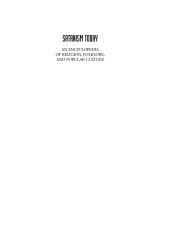I. VAMA MARGA Foundations Of The Left-Hand Path - staticfly.net
I. VAMA MARGA Foundations Of The Left-Hand Path - staticfly.net
I. VAMA MARGA Foundations Of The Left-Hand Path - staticfly.net
Create successful ePaper yourself
Turn your PDF publications into a flip-book with our unique Google optimized e-Paper software.
the male, allowing him to remanifest on a higher level of evolution.<br />
<strong>The</strong> anonymous author of the tale of Gilgamesh also tells us that the<br />
savage Enkidu is transfigured into a being "like unto a god" through the<br />
shakti-power emanated via Samhat's "art of the woman." An important part<br />
of this rite is the courtesan's "anointing Enkidu with fragrant oil." 2,500 years<br />
before the Christian era began, we see a prefiguration of the sacred prostitute<br />
Mary Magdalene's anointing of the god-man Christ with consecrated oil, a<br />
sexual laying on of hands that causes the power of the feminine holy spirit,<br />
the Sophia, to descend into the body of the magus. Like Samhat, the earliest<br />
known representative of their sorority, the whores of Babylon and Sumer laid<br />
claim to a similar initiatory ability.<br />
<strong>The</strong> importance of sacred prostitution to Babylon can be attributed to<br />
the fact that Mesopotamian culture's eldest and most prominent female<br />
divinity, the Queen of Heaven, was worshipped as the patroness of all<br />
prostitutes, both sacred and profane, female and male. This complex deity,<br />
known to the Sumerians as manna, and the Babylonians as Ishtar, was also<br />
venerated in other cultures as Astarte, among countless other regional<br />
variations. As a shakti conducive to workings of the sinister current, this<br />
goddess, still potent among Western left-hand path magicians today after<br />
thousands of years, has few peers.<br />
In a very early writing, a priestess known as Enheduanna refers to manna as<br />
the mother of harlots. In hymns sung in her honor, Ishtar describes her temple<br />
as a "tavern"; then, as now, the traditional hunting ground for whores. Some<br />
images portray her as a prostitute leaning out of a window looking for<br />
customers. Her temple priestesses were known as the ishtaritu, in honor of<br />
her, and as an indication that they were charged to embody her in the sexual<br />
rites of sacrament celebrated in her temples.<br />
Inanna is the erotic goddess par excellence, the wild, unrestrained<br />
side of female sexual power as a divine force in and of itself. Despite the<br />
adoration in which she was held by all quarters of Sumerian society, a culture<br />
characterized by the strict rule of law, and dominated by the importance of<br />
the family and the marriage contract, Innana is very much a divinity outside<br />
196<br />
197<br />
the established societal standards. In none of her myths is she depicted as a<br />
mother or a wife; the intensity of this manifestation of Shakti exceeds the<br />
ownership of another or acquiescence to the social niceties such roles would<br />
entail. "Like the demons," Volkert Haas has written of Ishtar in his study of<br />
Hittite magic, "she has no mother, husband or children." In this regard, she is<br />
the hypostasis of extramarital sex, prostitution and all acts of lust occurring<br />
outside the rule of law. Diane Wolkstein, a contemporary translator of the<br />
myths of Inanna-Ishtar, has described the goddess as "the place where not all<br />
energies have been tamed or ordered."<br />
And yet, every year, the kings of Sumer, and later of Babylon, were<br />
obliged to assure the vigor of their royal authority and of the fertility of the<br />
land by engaging in a publicly celebrated act of sexual magic with a priestess<br />
representing this wild sexual entity. <strong>The</strong> High Priestess of the ishtaritu would<br />
climb the zigurrat as the incarnation of the goddess; an altar-bed, "the bed of<br />
kingship and queenship", awaited her in a specially appointed chamber.<br />
<strong>The</strong>re, she took the sovereign into the liminal realm of what has been<br />
described as "the holy loins" or "her wondrous vulva", magically bestowing<br />
the power of the Queen of Heaven upon the King of Earth in a hieros gamos,<br />
a sacred wedding.<br />
In another public religious ceremony dedicated to Inanna, we see the<br />
symbolism of the left-hand path expressed in an hermaphroditic rite. Women<br />
devotees in these processions wore masculine attire on the right side of their<br />
bodies, while men wore feminine garb on their left sides, reflecting a pre-<br />
Tantric association of gender with the energies of right and left. This ritual
















